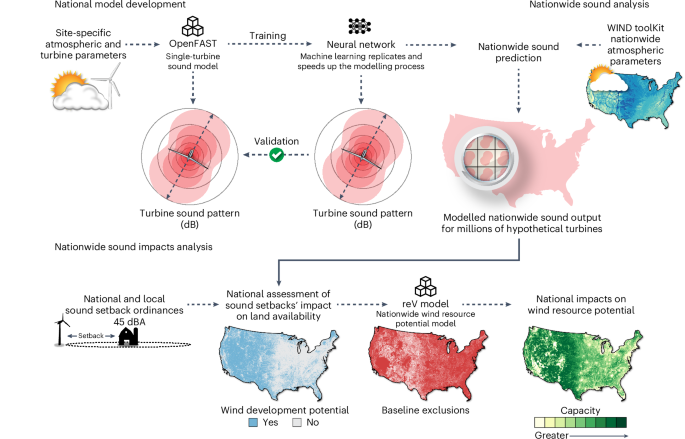Understanding the Congressional Budget Irresolution
In the wee hours this morning, the Senate approved the concurrent resolution on the budget and sent it to the House for consideration next week. One moderate (Sen. Susan Collins) and one fiscal hawk (Sen. Rand Paul) opposed the measure along with all Democrats. Democrats forced Republicans to vote down amendments to protect Medicare and Medicaid, to restore the staff that Elon Musk has cut from the Social Security Administration, to rebalance tax cuts more towards the middle class, to avoid explosive increases in the deficit, and, of course, to stop military planning from being conducted over Signal chats. The outcome was a foregone conclusion. A congressional budget resolution is a procedural prerequisite to advancing budget reconciliation legislation to make changes to revenue and entitlement spending legislation. Like a reconciliation bill, a budget resolution is immune from filibusters and hence can be, and usually is, passed on a uni-partisan basis. The budget resolution sets out the basic contours of a reconciliation bill – how much it must gain or can lose in revenues, how much it must save or can add in direct spending, and how all this is allocated among the chambers’ various committees. The idea is that fiscal responsibility will be enhanced if Congress agrees on outer limits before Members get too deeply enmeshed in fighting for this or that politically attractive provision. This year’s budget resolution could hardly be farther from that ideal. Congressional Republicans have two fundamental problems with their fiscal proposals. First, their plan depends on debilitating and deeply unpopular cuts to Medicaid, nutrition assistance, and student loans. With a recession now likely, the prospect of slashing benefits just as more people need them is politically toxic. And second, even with these deep cuts in aid to the vulnerable, the Republican tax proposals are a massive budget-buster. No Member who votes for this reconciliation bill can ever again be taken seriously in protestations about the deficit. On the face of it, this dilemma might seem likely to fracture the Republican Caucus, with deficit hawks pushing to rein in the tax cuts and ramp up the entitlement cuts while moderates push to protect Medicaid, nutrition aid, and student loans. This is precisely the kind of decision that the budget resolution process is intended to force. The Republicans’ actual path, however, has been quite different. Initially, it turns out that the only actual Republican moderates are in the Senate. House Republican “moderates” have proven they will vote for anything the leadership puts in front of them; they just claim to be moderates to help them win close districts. They objected to Rep. Jim Jordan becoming speaker because his provocative brand of extremism would make their “moderate” branding unsustainable, but on substantive legislation they have posed no problems for the leadership – even in a closely divided House where just two or three of them could easily force changes. Then, too, the “deficit hawks” turn out to be less principled than partisan. Unlike the “moderates”, they have been willing to defy their leadership to vote down spending bills. But they generally have only done so under Democratic presidents. The tax cuts President Trump is proposing would balloon the deficit far more than all the prior bills they voted down combined. Yet the “deficit hawks” have done nothing to temper that extravagance, confining themselves to advocating even more devastating cuts to programs for low-income people. House and Senate Republican leadership therefore regarded their problems as cosmetic rather than substantive and concocted a cosmetic rather than substantive solution. Instead of negotiating the contours of the coming reconciliation bill as conference committees are expected to do, they opted to give each faction a fig leaf to cover its votes. For the House “deficit hawks”, the budget resolution directs the House (only) to make cuts of staggering proportions in programs for low-income people. The prescribed House bill would still increase in the deficit radically, but the “deficit hawks” already voted for that when they supported the budget resolution on initial passage earlier. The “compromise” does not ask them to vote for any greater increase in the deficit than they already have. For the Senate moderates, the “compromise” budget resolution establishes a relatively low minimum amount of cuts to safety net programs in the Senate (only). It thus would allow a reconciliation bill that would fund the tax cuts almost entirely by increasing the deficit. The resolution allows the Senate to propose deeper human services cuts, but it has little reason to do so as its reconciliation bill will go to conference committee with a House bill with draconian reductions. For the House “moderates”, the budget resolution o
In the wee hours this morning, the Senate approved the concurrent resolution on the budget and sent it to the House for consideration next week. One moderate (Sen. Susan Collins) and one fiscal hawk (Sen. Rand Paul) opposed the measure along with all Democrats. Democrats forced Republicans to vote down amendments to protect Medicare and Medicaid, to restore the staff that Elon Musk has cut from the Social Security Administration, to rebalance tax cuts more towards the middle class, to avoid explosive increases in the deficit, and, of course, to stop military planning from being conducted over Signal chats. The outcome was a foregone conclusion.
A congressional budget resolution is a procedural prerequisite to advancing budget reconciliation legislation to make changes to revenue and entitlement spending legislation. Like a reconciliation bill, a budget resolution is immune from filibusters and hence can be, and usually is, passed on a uni-partisan basis.
The budget resolution sets out the basic contours of a reconciliation bill – how much it must gain or can lose in revenues, how much it must save or can add in direct spending, and how all this is allocated among the chambers’ various committees. The idea is that fiscal responsibility will be enhanced if Congress agrees on outer limits before Members get too deeply enmeshed in fighting for this or that politically attractive provision. This year’s budget resolution could hardly be farther from that ideal.
Congressional Republicans have two fundamental problems with their fiscal proposals. First, their plan depends on debilitating and deeply unpopular cuts to Medicaid, nutrition assistance, and student loans. With a recession now likely, the prospect of slashing benefits just as more people need them is politically toxic. And second, even with these deep cuts in aid to the vulnerable, the Republican tax proposals are a massive budget-buster. No Member who votes for this reconciliation bill can ever again be taken seriously in protestations about the deficit.
On the face of it, this dilemma might seem likely to fracture the Republican Caucus, with deficit hawks pushing to rein in the tax cuts and ramp up the entitlement cuts while moderates push to protect Medicaid, nutrition aid, and student loans. This is precisely the kind of decision that the budget resolution process is intended to force. The Republicans’ actual path, however, has been quite different.
Initially, it turns out that the only actual Republican moderates are in the Senate. House Republican “moderates” have proven they will vote for anything the leadership puts in front of them; they just claim to be moderates to help them win close districts. They objected to Rep. Jim Jordan becoming speaker because his provocative brand of extremism would make their “moderate” branding unsustainable, but on substantive legislation they have posed no problems for the leadership – even in a closely divided House where just two or three of them could easily force changes.
Then, too, the “deficit hawks” turn out to be less principled than partisan. Unlike the “moderates”, they have been willing to defy their leadership to vote down spending bills. But they generally have only done so under Democratic presidents. The tax cuts President Trump is proposing would balloon the deficit far more than all the prior bills they voted down combined. Yet the “deficit hawks” have done nothing to temper that extravagance, confining themselves to advocating even more devastating cuts to programs for low-income people.
House and Senate Republican leadership therefore regarded their problems as cosmetic rather than substantive and concocted a cosmetic rather than substantive solution. Instead of negotiating the contours of the coming reconciliation bill as conference committees are expected to do, they opted to give each faction a fig leaf to cover its votes.
For the House “deficit hawks”, the budget resolution directs the House (only) to make cuts of staggering proportions in programs for low-income people. The prescribed House bill would still increase in the deficit radically, but the “deficit hawks” already voted for that when they supported the budget resolution on initial passage earlier. The “compromise” does not ask them to vote for any greater increase in the deficit than they already have.
For the Senate moderates, the “compromise” budget resolution establishes a relatively low minimum amount of cuts to safety net programs in the Senate (only). It thus would allow a reconciliation bill that would fund the tax cuts almost entirely by increasing the deficit. The resolution allows the Senate to propose deeper human services cuts, but it has little reason to do so as its reconciliation bill will go to conference committee with a House bill with draconian reductions.
For the House “moderates”, the budget resolution offers essentially nothing – because the House “moderates” have repeatedly demonstrated that nothing is required to secure their votes.
The various groups can cast their eyes on the other chamber’s half of the budget resolution: House “fiscal hawks” can worry that the Senate bill is likely to be an even bigger budget-buster, and Senate moderates can worry about draconian cuts to the safety net in the coming House reconciliation bill. But the leadership is counting on each group to focus on their own chamber’s part of the resolution. Perhaps the House “moderates” can tell their constituents that they are voting for huge human services cuts because the budget resolution allows their Senate counterparts (but not them) to vote for smaller cuts.
The game plan seems to be to obscure the meaning of all votes prior to the vote on final passage of the conference agreement on the reconciliation bill. The House will pass a bill the “deficit hawks” can stomach (with the “moderates” promising that the human services cuts will come down in conference with the Senate). The Senate will pass a bill with less headline-grabbing safety net cuts as its “deficit hawks” promise greater “fiscal sanity” in negotiations with the House. Then the leadership will craft a final agreement that looks essentially like the House bill and ram it through before its contents are widely known. A few Senate Republican moderates, particularly those up for re-election next year, can vote “no” without endangering its passage; everyone else will justify their votes as necessary to prevent a tax increase at the outset of a recession.
To further camouflage what they are doing, Republican leadership is attempting an audacious revision of accounting rules. When they enacted the 2017 tax cuts, they insisted that the cost was “only” $1.9 trillion by insisting that many provisions would have no fiscal effect in the years after their scheduled expirations. Now Republican leadership wants to assume that that previously-neglected fiscal effect is already in the baseline so that the effect of their legislation will be measured by how much it further increases the deficit beyond the policies in the 2017 Act. Thus, the deficit impact of the 2017 policies beyond the end of this year would never be taken into account for either bill. This would be the equivalent of the Democrats enacting an expanded, refundable Child Tax Credit for a year – which they did – and then claiming it cost nothing to make it permanent – which they did not, and which Republicans would have denounced to no end had the Democrats tried.
Republican efforts to persuade the Senate Parliamentarian to accept this “current policy” baseline in defiance of law appear to have run into a brick wall – a useful reminder of the value of a parliamentarian with integrity even if one disagrees with some of her decisions. Instead, they will have their budget committee chairs present tendentious tables with the costs of continuing the 2017 tax cuts baked in. This likely will shape the coverage of credulous journalists insufficiently numerate to recognize the inconsistency of this position with the one many of the same Republicans adopted in 2017 and those fearing a retaliation if they write stories deemed “biased” by Republican leaders.
Leadership will keep the actual bills concealed until just before they come up for a vote. In particular, they do not want the time between the legislation’s release and a key vote to include a congressional recess, when constituents can urge their Members to vote it down. House Republicans apparently believe they can get their reconciliation bill drafted and passed before the Memorial Day Recess. Given the passivity of the “moderates” and “fiscal hawks”, they may well be correct. Indeed, the larger difficulty may be between special interests jostling to add their pet provisions to the tax cut package. If the leadership is not confident it can lock down a deal before the recess, however, it likely will keep the legislation obscure to allow Members to represent it as whatever might please their districts. In general, however, the leadership seems to feel it must move quickly before voters’ irritation with chaotic governance and anxiety about the economy narrow Republicans’ room to maneuver.
@DavidASuper1 @DavidASuper.bsky.social

































































































![F/A-XX hints, icebreaker ambitions and previewing day two of Sea Air Space [VIDEO]](https://breakingdefense.com/wp-content/uploads/sites/3/2025/04/250407_SAS_2025_indopac_WELCH-scaled-e1744076170241.jpg?#)























































































